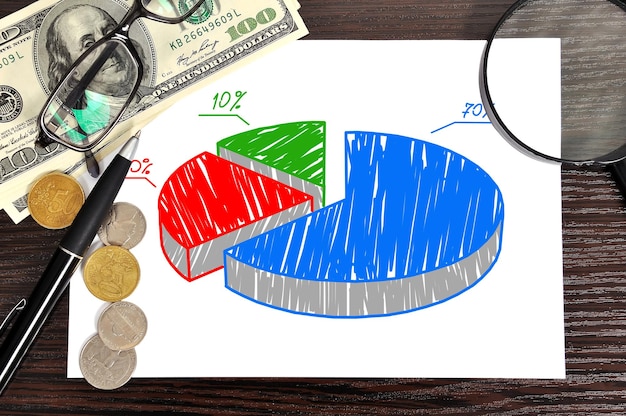Maximize Your 401(k) Contributions Before 2025 Limit Increase

Anúncios
Maximize your 401(k) contributions before the upcoming 2025 limit increase to potentially secure a more comfortable retirement by taking advantage of tax benefits and compounding growth.
Are you ready to **maximize your 401(k) contributions** before the increased limit takes effect in January 2025? This is a crucial opportunity to enhance your retirement savings and take full advantage of the potential tax benefits.
Understanding the 401(k) Contribution Limits
Understanding the 401(k) contribution limits is essential for effective retirement planning. These limits, set annually by the IRS, determine how much you can contribute to your 401(k) account each year. Staying informed about these limits helps you make strategic decisions to optimize your savings.
Current 401(k) Contribution Limits for 2024
For 2024, the 401(k) contribution limit for employees is $23,000. This means that if you’re under 50, you can contribute up to this amount from your paycheck throughout the year. For those aged 50 and over, there’s an additional catch-up contribution allowance.
Catch-Up Contributions for Those Aged 50 and Over
Employees aged 50 and over can contribute an additional $7,500 as a catch-up contribution, bringing their total possible contribution to $30,500 in 2024. This provision allows older workers to accelerate their savings as they approach retirement.

Here are key details to remember:
- Employee Contribution Limit (Under 50): $23,000
- Employee Contribution Limit (50 and Over): $30,500
- Employer Matching: Varies by company; check with your HR department
Understanding these limits ensures you can effectively plan your contributions and make the most of your 401(k) before any changes take effect in 2025. Keep in mind that these are just employee contributions; employer matching contributions are separate and do not count towards these limits.
Anticipating the 2025 Increased 401(k) Limit
The impending increase in the 401(k) contribution limit for 2025 presents a significant opportunity for individuals to boost their retirement savings. Staying informed about these changes is crucial for those looking to maximize their retirement nest egg.
Projected Increase in Contribution Limits
While the official numbers for 2025 are yet to be announced by the IRS, financial experts often provide estimations based on inflation and other economic factors. It’s anticipated that the employee contribution limit could rise to approximately $23,500, and the catch-up contribution for those aged 50 and over might also see a slight increase.
Historical Trends in 401(k) Limit Adjustments
Historically, 401(k) contribution limits have been adjusted upwards to keep pace with inflation and the rising cost of living. Reviewing past trends can provide insights into potential future adjustments, helping individuals better plan their savings strategies.
Here are some key considerations:
- Stay Informed: Keep an eye on official IRS announcements for the confirmed 2025 limits.
- Adjust Contributions: Plan to adjust your contribution percentage to take full advantage of the increased limits once they are announced.
- Consult Financial Advisor: Seek advice from a financial advisor to tailor your strategy based on your individual circumstances.
Preparing for the increase allows you to take immediate advantage of the new limits once they are officially announced, ensuring you’re on track to meet your retirement goals. Monitoring these adjustments is a proactive step in securing your financial future.
Strategies to Maximize Contributions Before the Deadline
To **maximize your 401(k) contributions** before the 2025 limit increase takes effect, it’s important to develop effective strategies. These strategies can help you take full advantage of the available tax benefits and ensure you’re on the right path to a comfortable retirement.
Evaluating Your Current Contribution Rate
Start by evaluating your current contribution rate. Determine the percentage of your salary you’re currently contributing and calculate how much you’ll contribute by the end of the year. Compare this to the 2024 limit of $23,000 (or $30,500 if you’re 50 or older) to see if you can increase your contributions.
Adjusting Your Budget to Increase Savings
To increase your savings, consider adjusting your budget. Identify areas where you can cut back on expenses, such as dining out, entertainment, or subscriptions. Redirect those funds to your 401(k) account to boost your contributions before the year-end deadline.

Here are some tips to help you:
- Automate Contributions: Set up automatic contributions from your paycheck to ensure consistency.
- Small Increments: Increase your contribution rate in small increments each month to make it more manageable.
- Tax Refund: Consider using a portion of your tax refund to make a lump-sum contribution to your 401(k).
By carefully evaluating your current contributions and adjusting your budget accordingly, you can strategically **maximize your 401(k) contributions** before the increased limit takes effect in 2025, setting yourself up for a more secure retirement.
The Tax Advantages of Maximizing 401(k) Contributions
Understanding the tax advantages of **maximizing 401(k) contributions** can provide significant financial benefits. These benefits can help you lower your current tax liability while simultaneously building a substantial retirement fund.
Pre-Tax Contributions and Tax-Deferred Growth
One of the primary advantages of contributing to a 401(k) is that your contributions are made on a pre-tax basis. This means the money you contribute is deducted from your taxable income, reducing your current tax liability. Additionally, your investments grow tax-deferred, meaning you won’t pay taxes on the earnings until you withdraw them in retirement.
Impact on Current and Future Tax Liabilities
By contributing the maximum amount to your 401(k), you can significantly lower your taxable income for the year. This can result in a lower tax bracket and reduced overall tax liability. Furthermore, the tax-deferred growth allows your investments to compound over time, potentially leading to substantial savings in retirement.
Key tax benefits include:
- Immediate Tax Savings: Reduce your current taxable income.
- Tax-Deferred Growth: Avoid paying taxes on investment gains until retirement.
- Potential Lower Tax Bracket: Lower your overall tax liability for the year.
Taking advantage of these tax benefits is a smart way to **maximize your 401(k) contributions** while improving your overall financial situation. Consult with a tax professional to determine how these benefits apply to your specific circumstances.
Common Mistakes to Avoid When Contributing to Your 401(k)
When contributing to your 401(k), it’s important to be aware of common mistakes that can hinder your progress. Avoiding these pitfalls ensures you’re making the most of your retirement savings efforts.
Not Contributing Enough to Get the Full Employer Match
One of the most frequent mistakes is not contributing enough to receive the full employer match. Many employers offer a matching contribution up to a certain percentage of your salary. Failing to contribute enough to receive the full match means you’re leaving free money on the table.
Withdrawing Funds Early and Incurring Penalties
Withdrawing funds early from your 401(k) can result in significant penalties. Generally, withdrawals before age 59 1/2 are subject to a 10% penalty, in addition to being taxed as ordinary income. This can significantly deplete your retirement savings.
Here are some common mistakes to avoid:
- Ignoring Employer Matching: Contribute at least enough to receive the full employer match.
- Early Withdrawals: Avoid withdrawing funds early unless absolutely necessary.
- Not Rebalancing: Regularly rebalance your portfolio to maintain your desired asset allocation.
By avoiding these common mistakes, you can ensure you’re making informed decisions that support your long-term financial goals. Consider seeking advice from a financial advisor to tailor your strategy to your specific needs.
Planning for Retirement Beyond 401(k) Contributions
While **maximizing your 401(k) contributions** is crucial, it’s important to recognize that retirement planning extends beyond just your 401(k). A comprehensive retirement plan should include various investment vehicles and strategies to ensure a secure financial future.
Diversifying Investments for Long-Term Security
Diversifying your investments is a key component of a successful retirement plan. This involves spreading your investments across different asset classes, such as stocks, bonds, and real estate. Diversification helps reduce risk and improve the potential for long-term growth.
Considering Other Retirement Savings Vehicles like IRAs
In addition to your 401(k), consider utilizing other retirement savings vehicles, such as Individual Retirement Accounts (IRAs). Traditional IRAs offer pre-tax contributions and tax-deferred growth, while Roth IRAs offer tax-free withdrawals in retirement. Depending on your income and financial goals, either option can be a valuable addition to your retirement plan.
Here are some things to consider:
- Diversification: Spread your investments across different asset classes.
- IRAs: Utilize Traditional or Roth IRAs for additional tax advantages.
- Consult a Professional: Seek guidance from a financial planner to create a comprehensive strategy.
Remember, a well-rounded approach to retirement planning ensures you’re prepared for a comfortable and secure financial future. Look beyond your 401(k) and consider other options to complement your savings strategy.
| Key Point | Brief Description |
|---|---|
| 💰 Contribution Limits | Know the 2024 limits: $23,000 (under 50), $30,500 (50+). |
| 📈 Anticipate 2025 Increase | Prepare for a potential increase in contribution limits. |
| ✅ Maximize Before Deadline | Adjust budget and automate contributions |
| 🤝 Seek Professional Advice | Consult a financial advisor to tailor your plan. |
Frequently Asked Questions (FAQs)
▼
In 2024, the employee contribution limit for 401(k) plans is $23,000. If you’re under 50, this is the maximum amount you can contribute from your paycheck throughout the year.
▼
For employees aged 50 and over, the catch-up contribution limit is $7,500. This allows them to contribute a total of $30,500 in 2024, accelerating their retirement savings as they approach retirement.
▼
To increase your contributions, evaluate your current contribution rate and adjust your budget to save more. Consider cutting back on non-essential expenses and redirecting those funds to your 401(k) account.
▼
Withdrawing funds early from your 401(k) can result in significant penalties. Generally, withdrawals before age 59 1/2 are subject to a 10% penalty, in addition to being taxed as ordinary income.
▼
Yes, it’s beneficial to consider other retirement savings vehicles, such as Individual Retirement Accounts (IRAs). Traditional IRAs and Roth IRAs can provide additional tax advantages and diversification for your retirement plan.
Conclusion
Taking proactive steps to **maximize your 401(k) contributions** before the 2025 limit increase is a smart financial move. By understanding contribution limits, employing effective savings strategies, and avoiding common mistakes, you can boost your retirement savings and secure a more comfortable financial future.